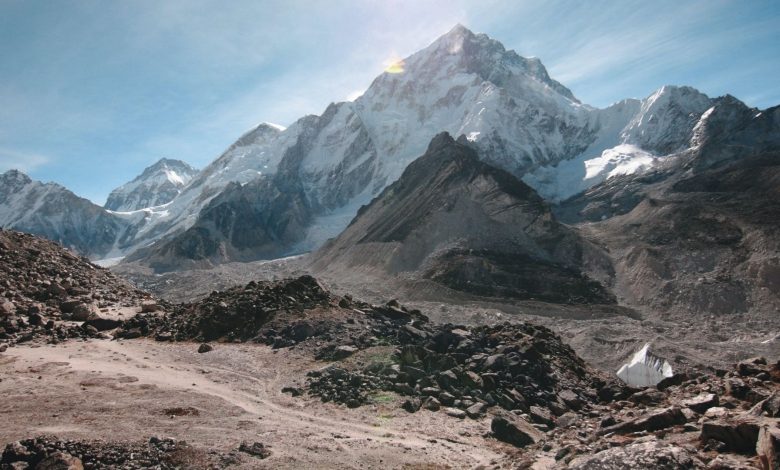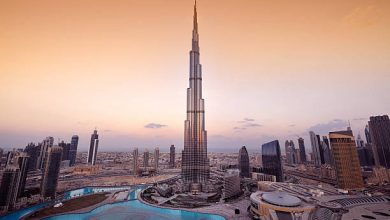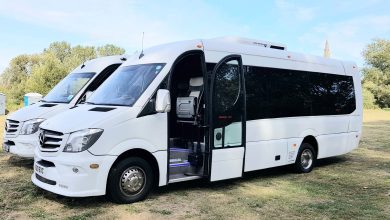About Everest Base Camp Trek | Trekking in Nepal

The Everest Base Camp Trek in Nepal is one of the country’s most well-known trekking routes. Nepal is known as “the Land of the Himalayas,” and despite its modest size, the country contains a vast spectrum of geographical, cultural, and wildlife diversity. Nepal is home to eight of the world’s ten tallest mountains, including Mount Everest, the world’s tallest mountain peak. As a result, trekking in Nepal has become one of the most popular activities among adventurous travellers and trekkers from around the world.
There are numerous wonderful trekking spots throughout the country, each with its own topography, cultural significance, and beauty. Thousands of trekkers and travellers visit the country each year to take in the country’s various natural, cultural, and traditional attractions. The Everest region is the most well-known of Nepal’s trekking destinations, and the Everest Base Camp Trek is the most popular, accounting for a substantial percentage of the country’s tourism revenue.
One may believe that walking to the base camp of the world’s tallest mountain peak necessitates a significant amount of time and money, yet nothing could be further from the reality. Everest Base Camp Trekking is inexpensive and accessible to individuals of all ages. It can be complete by both inexperienced first-time hikers and expert mountaineers.
The Everest region’s (also known as the Khumbu) many amazing features and aspects, such as rich Sherpa culture, beautiful mountainous landscape brimming with river valleys, gorges, moraines, glaciers, and mountain rivers, and magnificent views and sights of the Mahalangur Himalayan range, which includes some of the world’s tallest mountains, are all accessible via the base camp trek. The Khumbu is Nepal’s most important Sherpa settlement, with a rich and dense concentration of Sherpa heritage and practises found nowhere else in the country. Also have a look on Rupin Pass Trek .
Trail
A flight from Kathmandu to Lukla is normally require to reach Mount Everest’s base camp. The flight from the country’s capital to Lukla takes roughly 30 to 40 minutes and is consider one of the most exciting short flights on the planet. The Lukla Airport, which is located on a cliff and has a single runway that terminates with a drop into the gaping open valley below, is also an interesting airport. Lukla’s terrain is quite different from Kathmandu’s, as it is surround by tall green hills and mountains. As soon as one lands in Lukla, this shift is noticeable.
Best Time
Autumn (September to December), spring (March to May), winter (the end of December to February), and summer are the four main seasons of Nepal (June to August). Because the weather conditions are enormously beneficial and ideal throughout these months, the autumn and spring seasons are regard the greatest seasons for trekking the base camp journey. The clouds are dissipating, and the vistas of the mountains are becoming more clear. Summer and winter are not ideal trekking seasons, but the expedition can still be complete.
Also See: Things to Carry on Trekking
Equipments
Proper trekking boots, sleeping bags, duffle bags, climbing poles, and adequate hiking clothing are all required for the Everest Base Camp Trek. Trekking boots that you are comfortable with and have “broken into” are essential. Trekking with uncomfortable boots can cause blisters on the feet and make for an unpleasant excursion that is continuously disrupte by the sensation of uncomfortable boots in the steep terrain. That is why it is critical to have decent and comfortable trekking boots (of any brand as long as you are comfortable using them). It’s also a good idea to bring as little as possible. Packing light will save you time and reduce the risks of misplacing items.
Porters are commonly use in the mountains to carry duffel bags. Between two persons, a porter may carry up to 25 kilogrammes of weight. As a result, packing a duffle bag that does not weigh more than 12 kg is the most practical option. Hotels in Kathmandu also have safety storage lockers where you can store any luggage that isn’t absolutely necessary for the hike. In Kathmandu, there are numerous shops that sell trekking and hiking equipment. You can rent or hire them both once you reach in the city and before you begin your adventure. Although a suitable Down Jacket is require, if you are trekking in the autumn or spring, the temperatures remain mildly warm during the day, and you may hike comfortably with T-shirts and hiking shorts. As the sun sets and the atmosphere becomes chilly, thick headgear, wool socks, and coats become indispensable. Sunscreen, sunglasses, and hiking caps are among the other essentials.
Accommodations
Kathmandu has a diverse selection of hotels, ranging from three to five stars. However, once the hike begins, lodging options in the mountains may be restrict to guesthouses, tea houses, and lodges. Guesthouses with more services are available in towns like Namche Bazaar, Phakding, and Lukla, although the remainder of the places have modest guesthouse lodgings. This isn’t to suggest that the accommodations aren’t pleasant. The guesthouses and lodges, on the other hand, are very comfortable, and breakfast and dinner are offered there. In the highlands, twin-sharing lodge-to-lodge accommodations are common, and trekkers are occasionally obliged to share a room with other trekkers (of the same gender). All guesthouses have electricity, and some even offer wireless internet access. Laundry services are only offered in Namche, Lukla, and Phakding, and a fee for using hot water must be paid.
Meals are available in both vegetarian and non-vegetarian varieties. Breakfast options range from oats, toasts, eggs, pancakes, and juice to dumplings, noodles, and pastas in the guesthouses. Trekkers typically eat rice and veggies for dinner. In the afternoon, lunch is provided on the way from one destination to the next. In the highlands, there are shops where you may buy drinking water. During trekking, a litre of water costs around USD 100 or 150. Water-purifying tablets can also be carried by hikers.
Sickness
Altitude Sickness is a physical illness that develops when the body is unable to acclimate to the high altitude circumstances found in the mountains. This illness manifests differently in different people. If the signs of the illness are not adequately address, the situation might quickly deteriorate. As a result, it is critical to allow adequate acclimatisation time while hiking to allow the body to acclimate to the altitude difference. It is strongly suggested against rushing through the trek without adequately acclimatising, especially for inexperienced hikers. Headache, insomnia, and a loss of appetite are some of the symptoms of the illness. While trekking, it’s critical to stay hydrated and eat well to maintain energy levels. It’s best to take things slowly and steadily at your own pace. Medicines for the illness can also be give to lessen the risks of it occurring. Medicines such as Diamox can assist. Some trekkers take the drug right at the start of their journey, in Kathmandu. If the symptoms of the illness appear and you are unable to continue, it is recommend that you stay and rest until you feel better before continuing.
Money
In Kathmandu, there are numerous money exchange centres where you may convert international currencies. Taking foreign currency into the mountains is not recommend because it can be inconvenient. Instead, transferring money before to the start of the walk is the easiest approach to avoid unnecessary problems while trekking. Local currency also makes it simple to purchase goods and pay for services in the highlands.





